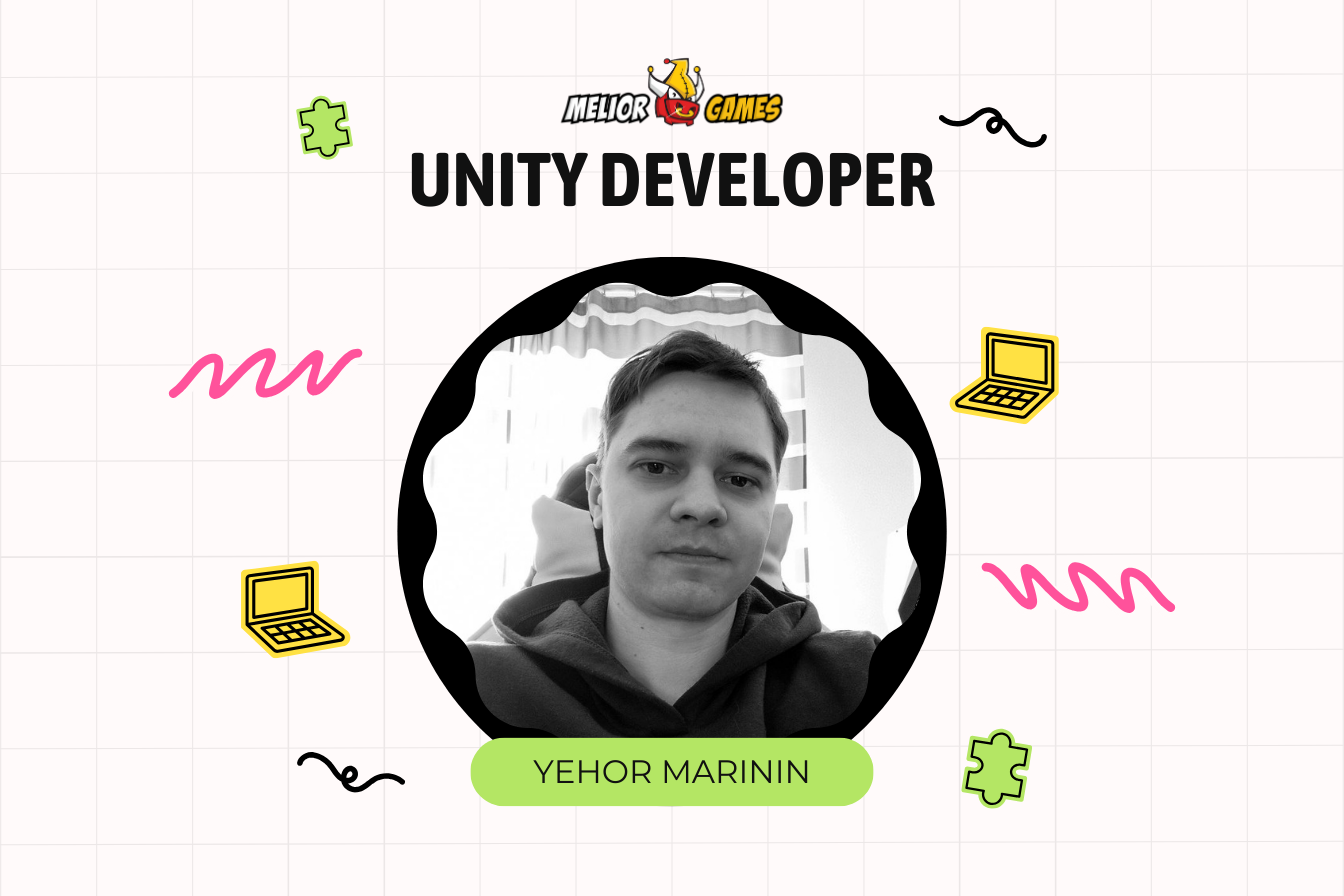
Melior Games boasts a talented team of developers, each contributing their unique expertise to our array of projects. Today, we have the pleasure of interviewing Yehor, a seasoned Unity developer who has been an integral member of our team for nearly two years. Yehor will provide insights into his journey, highlight his skills, and discuss the significant contributions he has made to our most exciting projects.
Yehor, thank you for joining us today. Let’s start by exploring your background. What initially drew you to the world of game development?
I appreciate the invitation. My interest in game development sparked during my youth when I discovered the fusion of creativity and technology. The idea of crafting immersive virtual worlds and captivating adventures fascinated me profoundly. This passion motivated me to pursue a career in game development, where I could harness my skills to bring imagination to life through tangible experiences.
Your main focus is on Unity development. Could you share your journey with Unity and how you’ve improved your skills over time?
My preferred platform since I began working has been Unity. Because of its adaptability and intuitive UI, it’s perfect for realizing a variety of game ideas. I’ve studied Unity’s features extensively over the years, becoming an expert on everything from complex HLSL shader programming to gameplay dynamics. In order to swiftly develop and improve 3D models and textures, I am also proficient in the usage of Blender, ZBrush, and Substance Painter.
You’ve mentioned your involvement in various projects during your time at Melior Games. Can you tell us about some of the highlights and challenges you’ve encountered?
One of the notable projects I’ve contributed to is EDGE Terminal, a pivotal component within laser tag facilities operating Laser Tag Pro equipment. This innovative platform serves as a gateway for players to access their favorite laser tag arenas, where they can register with their unique gamertag. The challenge was to connect many devices with different operating systems and firmware in one big system.
Additionally, I’ve had the pleasure of contributing to titles like Arcanoid, Circle Wars, Circlum, and Dominance. Each project brought its own set of challenges, whether optimizing graphics for different platforms, or porting the game to updated operating systems. However, it’s these challenges that drive me to continuously improve and innovate in my craft.
How do you, as a developer who is conversant in both Unity and Unreal Engine, select the appropriate engine for a given project?
Selecting the appropriate engine for a project is vital, and it hinges on factors like the project’s scope, target platform, and gameplay mechanics requirements. While I prefer Unity for its flexibility and user-friendliness, Unreal Engine stands out for its photorealistic graphics and advanced physics simulations. I assess these factors meticulously and collaborate with my team to decide on the most suitable engine for each project. This ensures that we harness the strengths of the chosen engine to provide players with the best possible experience.
As we gaze ahead, what are your aspirations and goals for the future of game development, both personally and within the industry?
As a Unity developer, I’m very eager to investigate novel approaches to game production and identify industry best practices and cutting-edge tools that will enhance player experience. Furthermore, I believe that real-time visualization, artificial intelligence, and virtual reality will drastically transform this industry. I’m eager to see how these advancements will radically alter the video game business and present gamers and developers with fascinating new prospects.
Thank you, Yehor, for sharing your insights and experiences with us today. It’s been a pleasure talking with you.
Thank you for having me. I look forward to continuing to collaborate with the talented team here at Melior Games and contributing to the exciting projects that lie ahead.




